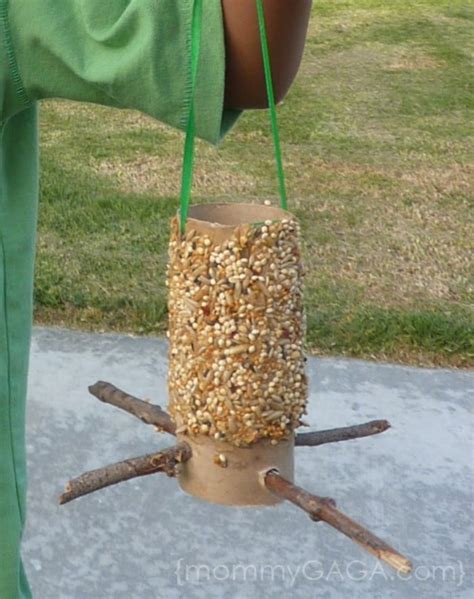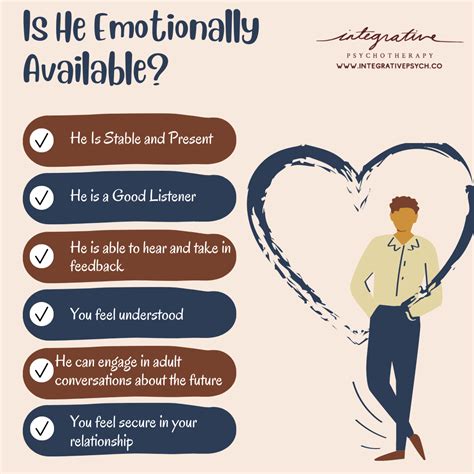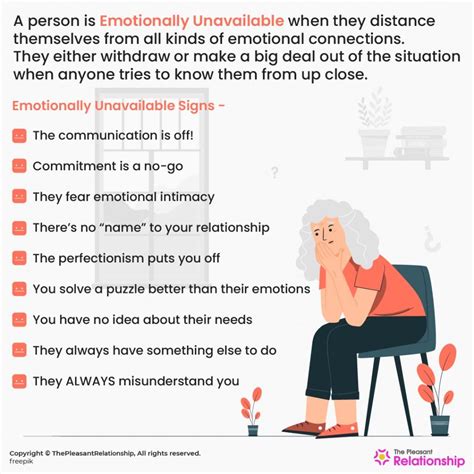
Empty toilet paper rolls, typically destined for the recycling bin, can be repurposed as an effective and eco-friendly tool for attracting birds to your yard by creating simple, accessible bird feeders.
Many bird enthusiasts are discovering that the humble toilet paper roll offers a surprisingly effective way to bring feathered friends closer to home. Rather than discarding these cardboard cylinders, they can be transformed into makeshift bird feeders with just a few simple steps, providing a sustainable and cost-effective method for attracting a variety of bird species. According to experts, this method offers a dual benefit: it recycles waste and provides a readily available food source for birds, especially during leaner months.
Creating a Toilet Paper Roll Bird Feeder
The process of creating a toilet paper roll bird feeder is remarkably straightforward and requires minimal materials. First, gather empty toilet paper rolls (or paper towel rolls cut to size). Then, spread a layer of peanut butter (or any bird-safe alternative like sunflower seed butter) evenly around the exterior of the roll. The peanut butter acts as an adhesive to hold the birdseed. Next, roll the peanut butter-covered roll in a tray or container filled with birdseed until the entire surface is coated. Finally, thread a string or twine through the center of the roll to create a hanger, and suspend the feeder from a tree branch, hook, or any other suitable location in your yard.
“It’s such a simple project that even kids can get involved,” says [hypothetical ornithologist name] from the National Audubon Society, “and it’s a great way to teach them about wildlife and the importance of recycling.”
Benefits of Using Toilet Paper Roll Bird Feeders
Using toilet paper roll bird feeders offers several advantages. First and foremost, it’s an environmentally friendly way to recycle materials that would otherwise end up in landfills. By repurposing these rolls, you reduce waste and contribute to a more sustainable lifestyle. Secondly, it’s an incredibly affordable way to attract birds. The primary costs are peanut butter and birdseed, both of which are relatively inexpensive. This makes it an accessible option for bird lovers on a budget.
Furthermore, these feeders are easy to make and maintain. The simple design means that even novice bird watchers can create and hang them with minimal effort. The small size of the feeders also makes them ideal for smaller yards or balconies where space is limited. Finally, observing birds feeding in your yard provides a source of relaxation and enjoyment, connecting you with nature and promoting mental well-being. The article also notes, “Many users report a noticeable increase in bird activity in their yards after hanging these feeders.”
Choosing the Right Birdseed
The type of birdseed you choose can significantly impact the types of birds you attract. Black oil sunflower seeds are a popular choice, as they are high in calories and appeal to a wide variety of birds, including finches, cardinals, and chickadees. Other options include millet, which attracts ground-feeding birds like doves and sparrows, and nyjer seeds, which are particularly favored by finches.
“Experiment with different seed mixes to see which ones attract the most birds to your yard,” suggests [hypothetical local bird expert name] from a local ornithology club. “Offering a variety of seeds will increase the diversity of bird species you attract.”
Safety Considerations
While toilet paper roll bird feeders are generally safe for birds, there are a few precautions to keep in mind. Always use bird-safe peanut butter or sunflower seed butter. Avoid peanut butter that contains additives like xylitol, an artificial sweetener that is toxic to birds.
It’s also important to choose a location for your feeder that is safe from predators like cats. Hang the feeder high enough off the ground that cats cannot reach it, and consider placing it near shrubs or trees where birds can take cover if they feel threatened. Regularly monitor the feeder for signs of mold or contamination, and replace it as needed to prevent the spread of disease. Also, be mindful of the string or twine used to hang the feeder, ensuring it is strong enough to support the weight of the roll and any birds that may land on it.
Additionally, it’s crucial to replace the toilet paper rolls regularly, especially after rain or snow, as they can become soggy and attract mold. Regularly cleaning the area beneath the feeders can also prevent the accumulation of seed hulls and droppings, which can attract rodents and other unwanted pests.
Expanding on the Idea: Variations and Enhancements
While the basic toilet paper roll bird feeder is effective on its own, there are several ways to enhance it and make it even more appealing to birds. One option is to create multiple feeders and hang them in different locations around your yard. This can help to reduce competition among birds and attract a wider variety of species.
Another option is to decorate the feeders with non-toxic paints or natural materials like twigs and leaves. This can make them more visually appealing and help them blend in with the surrounding environment. However, it’s important to ensure that any decorations are securely attached and do not pose a hazard to birds.
You can also experiment with different types of birdseed and other food items. For example, you can add dried fruit, nuts, or mealworms to the feeders to provide a more varied and nutritious diet for the birds. Just be sure to research which foods are safe and appropriate for the bird species in your area.
Some people also create elaborate feeding stations using multiple toilet paper rolls and other recycled materials. These stations can include different types of feeders, water sources, and perches, creating a comprehensive habitat for birds in your yard.
Community Engagement and Educational Opportunities
Creating toilet paper roll bird feeders can also be a great way to engage with your community and promote environmental awareness. You can organize workshops or demonstrations to teach others how to make these feeders, or you can donate them to local schools, parks, or community gardens.
This activity can also be incorporated into educational programs for children, teaching them about bird identification, ecology, and conservation. By involving children in the process of creating and maintaining bird feeders, you can help them develop a lifelong appreciation for nature and a commitment to protecting the environment.
Furthermore, you can use the experience of attracting birds to your yard as an opportunity to learn more about local bird species and their habitats. Keep a journal of the birds you observe, noting their behavior, feeding habits, and migration patterns. This information can be valuable for understanding the ecological dynamics of your area and for contributing to citizen science projects.
Long-Term Sustainability
While toilet paper roll bird feeders are a great short-term solution for attracting birds, it’s important to consider the long-term sustainability of your efforts. Planting native trees, shrubs, and flowers that provide food and shelter for birds is a more sustainable way to support bird populations.
Also, consider providing a consistent source of fresh water for birds, especially during dry periods. A bird bath or shallow dish of water can be a lifesaver for birds, providing them with a place to drink and bathe.
By combining the use of toilet paper roll bird feeders with other sustainable practices, you can create a welcoming and thriving habitat for birds in your yard for years to come.
Addressing Potential Drawbacks
While the benefits of using toilet paper roll bird feeders are numerous, it’s also essential to acknowledge potential drawbacks. One significant concern is the feeder’s lifespan and durability. Toilet paper rolls are biodegradable and susceptible to weather conditions, particularly rain and humidity. A soaked roll can disintegrate quickly, potentially wasting the birdseed and creating a mess. To mitigate this, consider using thicker cardboard or paper towel rolls, which offer more resilience. Applying a thin layer of beeswax or a non-toxic sealant could also extend the feeder’s life, but ensure the sealant is completely dry and safe for birds before use.
Another potential issue is the attraction of unwanted pests. Birdseed can attract rodents, squirrels, and even insects. To minimize this, avoid overfilling the feeders, clean up spilled seed regularly, and consider using feeders with baffles or other pest-deterrent features. Hanging the feeders away from structures or vegetation that pests can easily climb can also help.
Furthermore, while peanut butter is a popular choice for coating the rolls, it’s crucial to ensure it’s bird-safe. As mentioned previously, avoid peanut butter containing additives like xylitol, which is highly toxic to birds. Additionally, some birds may have allergies to peanuts, so offering alternatives like sunflower seed butter or rendered suet can be a more inclusive approach.
Finally, remember that relying solely on toilet paper roll feeders isn’t a sustainable long-term solution for bird conservation. While they provide a supplemental food source, creating a diverse and natural habitat that supports birds’ natural foraging behaviors is crucial. This includes planting native trees, shrubs, and wildflowers that offer food, shelter, and nesting sites.
Extending the Concept: Other Recycled Materials
The success of the toilet paper roll bird feeder highlights the potential for using other recycled materials to create bird-friendly amenities. Plastic bottles, for example, can be transformed into durable and weather-resistant bird feeders. Cut holes in the sides of the bottle to allow birds access to the seed, and insert perches below the holes for them to stand on. Empty milk cartons can also be repurposed in a similar way, providing a larger capacity for birdseed.
Old CDs or DVDs can be strung together to create reflective deterrents that can help keep birds from flying into windows. The reflective surfaces disorient the birds and prevent collisions. Similarly, old clothing or fabric scraps can be used to create nesting material for birds, providing them with soft and comfortable bedding for their nests.
By thinking creatively and using recycled materials, you can significantly reduce waste and create a more sustainable and bird-friendly environment in your yard.
Legal and Ethical Considerations
While attracting birds to your yard is generally encouraged, it’s essential to be aware of any local ordinances or regulations that may apply. Some communities have restrictions on feeding wildlife, particularly in areas where it may attract nuisance animals or create unsanitary conditions. Check with your local authorities to ensure that your bird-feeding practices comply with all applicable laws.
Ethically, it’s crucial to avoid causing harm to birds or disrupting their natural behaviors. Avoid using pesticides or herbicides in your yard, as these can be toxic to birds and other wildlife. Also, be mindful of noise levels and avoid disturbing nesting birds or their young.
Responsible bird feeding involves providing supplemental food in a way that benefits birds without creating unintended consequences. This includes choosing appropriate foods, maintaining clean feeders, and monitoring the impact of your feeding practices on local bird populations.
Toilet Paper Roll Bird Feeders: A Case Study
In a small suburban community in Ohio, a group of residents decided to implement a community-wide initiative to create and distribute toilet paper roll bird feeders. The project was organized by a local environmental group and involved residents of all ages.
Participants gathered empty toilet paper rolls and other recycled materials, and the group provided peanut butter and birdseed. Over the course of a weekend, they assembled hundreds of bird feeders, which were then distributed to residents throughout the community.
The initiative proved to be a great success. Residents reported a significant increase in bird activity in their yards, and the project helped to foster a sense of community and environmental awareness. Children were particularly engaged in the project, learning about bird identification and the importance of recycling.
The success of this project demonstrates the potential for simple, low-cost initiatives to have a positive impact on both the environment and the community.
The Future of DIY Bird Feeding
The popularity of toilet paper roll bird feeders is a testament to the growing interest in DIY and sustainable living. As more people become aware of the environmental challenges facing the world, they are seeking creative and affordable ways to reduce their impact and connect with nature.
DIY bird feeding is likely to continue to grow in popularity, as people discover new and innovative ways to use recycled materials to create bird-friendly amenities. With a little creativity and ingenuity, anyone can transform their yard into a welcoming haven for birds and other wildlife.
The key to success is to stay informed, be responsible, and always prioritize the health and well-being of the birds. By following these guidelines, you can enjoy the benefits of attracting birds to your yard while contributing to a more sustainable and ecologically balanced environment.
Conclusion
Repurposing empty toilet paper rolls into bird feeders presents a simple, cost-effective, and environmentally responsible method for attracting birds to your yard. This easy-to-implement technique not only provides a supplementary food source for birds but also promotes recycling and offers an engaging activity for individuals of all ages. By adhering to safety guidelines, selecting appropriate birdseed, and considering long-term sustainability, you can create a thriving habitat for birds while reducing waste and fostering a deeper connection with nature. While not a comprehensive solution for bird conservation, the toilet paper roll bird feeder serves as a valuable tool in promoting environmental awareness and encouraging a more sustainable lifestyle. Remember to consider the potential drawbacks and always prioritize the well-being of the birds when implementing this and other bird-friendly practices.
Frequently Asked Questions (FAQ)
1. What kind of peanut butter is safe to use for toilet paper roll bird feeders?
Only use natural peanut butter that does not contain xylitol. Xylitol is an artificial sweetener that is highly toxic to birds. Look for peanut butter with minimal ingredients, ideally just peanuts and salt. Sunflower seed butter is a good alternative if you are concerned about peanut allergies.
2. How often should I replace the toilet paper roll bird feeder?
The lifespan of a toilet paper roll bird feeder depends on the weather conditions. After rain or snow, they can become soggy and may need to be replaced immediately. In dry weather, they may last for several weeks. Regularly inspect the feeder for mold or damage and replace it as needed. Aim to replace them at least every one to two weeks for hygiene purposes.
3. What type of birdseed is best to use on toilet paper roll bird feeders?
Black oil sunflower seeds are a popular and versatile choice, attracting a wide variety of birds. Other options include millet, nyjer seeds, and mixed birdseed blends. Experiment to see which seeds attract the most birds in your area. Consider offering a variety to cater to different species.
4. How can I prevent squirrels and other pests from eating the birdseed?
Hang the feeder in a location that is difficult for squirrels to access, such as on a thin branch or suspended from a wire away from trees or buildings. You can also use a baffle above the feeder to prevent squirrels from climbing down. Avoid using birdseed mixes that contain corn or peanuts, as these are particularly attractive to squirrels.
5. Is it safe for birds to eat peanut butter?
Yes, natural peanut butter is generally safe for birds in small quantities. However, it’s important to avoid peanut butter with added salt, sugar, or artificial sweeteners like xylitol, which are harmful. Always choose natural, unsalted peanut butter or consider using sunflower seed butter as a safer alternative.









